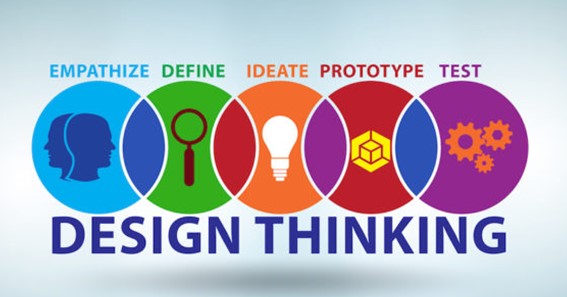The design thinking process is a methodology that focuses on people when designing a product. This methodology concentrates on people’s problems and how they can be solved. This process has different stages, and we will tell you what they are.
Designers use this design methodology worldwide, and we want to help you understand why it is so popular.
What Is The Design Thinking Process?
The design thinking process helps designers create creative designs for products that people can use and enjoy. The design solves the problem that people are having; this methodology focuses on that.
This methodology does not have a linear path. The designers might have new ideas in later stages of the process, and they can then choose those new ideas to iterate on. The designers will go back to the steps they had completed and start again if the new idea is better.
The design thinking process does not limit designers. This is why diverge convergence design thinking is normal.
click here – How to Choose a Color Palette For Your Website
Stage 1 – Empathy
During this stage in the design thinking methodology, the designer will talk with the target audience and find out more about their problem. This will help the designer narrow down the people’s pain points and identify the best way to tackle the problem they are facing.
Considering empathy when designing a product will improve its chances of success, which is one reason why the design thinking process is so popular. It gives the designer more information about the target audience’s experiences and what they think about the problem they are facing.
Designers will also consult experts to find out as much as possible about the problem they need to solve. They will even engross themselves in the physical environment to get a deeper understanding. All of this is done to make sure the problem is understood and take the right steps when trying to solve it.
Stage 2 – Defining The Problem
The designer needs to put together all the information they got during the empathy stage in this stage. The data needs to be analyzed to identify the main pain points. Once the problems have been found, the designer will write a problem statement that includes the problem that needs to be solved.
The problem statement needs to be written to focus on the target audience and their experience. This will make the process human-centered and let the designer create a solution for the target audience.
Always focus on the target audience and what they need. This is the best way to tackle the problems they are having. The designer should not be thinking about how the product can be successful, but how it can help people.
Stage 3 – Ideate
This stage lets the designer be creative and think up ideas that can be used to solve the problem that people are having. The designer is encouraged to let their ideas and creativity flow and not limit themselves. It is essential to understand the problem, as that will allow the designer to be creative but remain grounded in the problem statement.
Designers can share their ideas with others and bounce off ideas to identify what ideas will work and which ones will not. This is one way that designers can find the best solution to the problem. The more pictures the designer can come up with, the easier it will be for them in later stages. They can look into each idea and identify what is wrong with it and what isn’t.
click here – Types of Fonts: Detailed Classification for a Designer
Stage 4 – Prototyping
Prototyping the designers’ ideas is essential, and it will help separate the good ideas from the bad. There can be different types of prototypes that the designer can create, such as sketches or wireframes made on specialized software. The idea is to find out if the idea is good enough to solve the problem people are having, and if there are any problems with the design, identify what they are and how they can be removed.
In the prototyping stage, the designer should look out for the problems with the designs and how they can be solved. A UX design agency will do this to make sure they find all the issues before releasing the product to people to have the best user experience.
If you need help prototyping getting information about the prototype, then get help from a user experience design agency to find out all the information you need to improve your designs for the target audience. To ensure that you get the best help you need, you can perform screening assessments for designers using tests on how to become a product designer.
Stage 5 – Testing
During the testing stage, the designs will be tested by real people. This will help the designer get important information about the plan. What do people think about it? What do they like about the design? And what do they dislike? All of this information and more will be used to improve and give people the best product that will solve their problems.
This stage is an iterative process, and designs will usually be tested repeatedly after changes are made using the information the designer got from people. A UX design agency will have experience doing this since it is an essential step in creating successful products.
Conclusion
The design thinking process is a popular methodology that designers use worldwide. Whether they are working alone or in a UX/UI design firm, this methodology will help any designer create the best designs that help solve people’s problems.
To Know Some Great Stuff Do Visit EagerClub
To Know Some Great Stuff Do Visit EarthCycle
To Know Some Great Stuff Do Visit EkSankalpJob

